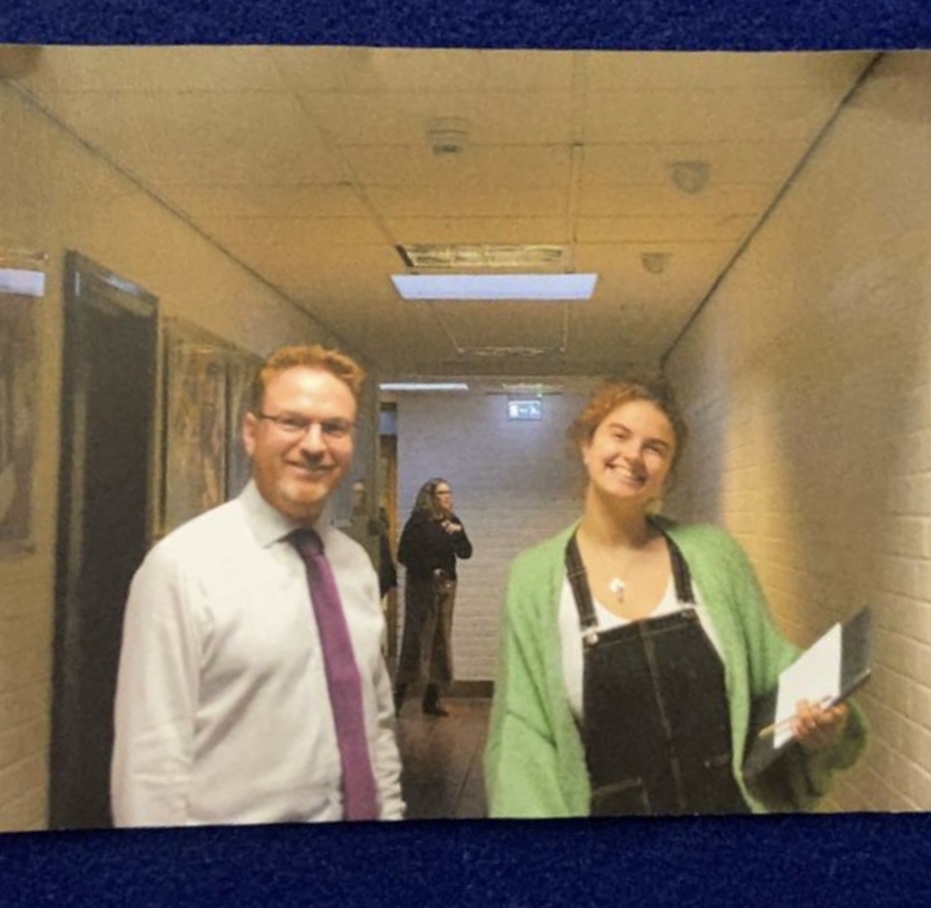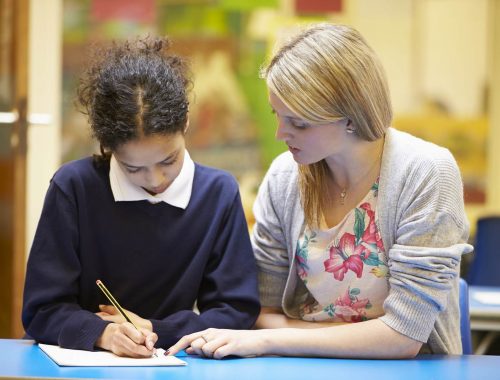The Importance of Personalised Lesson Plans – Learnt the Hard Way
By Kathryn Collins
Reflecting on my work placement in Laurelhill Community College, there has been many challenges I have had to overcome. From learning new technology I had no prior knowledge of, learning how to manage behaviour within the classroom and learning how to communicate professionally within the classroom, this year has been invaluable for both my education, and giving me an insight into my future career goal of being a teacher. However, something I struggled with at the beginning of my placement was the importance of paying attention to a classes individual learning style, and that not all classes will respond well to the same lesson plans and teaching styles.

For this post I will be using the Gibbs reflective model to analyse how I began teaching my classes, how I was able to address the challenges I faced, and how I changed my teaching style to allow for more effective teaching. The Gibbs reflective model allows you to simplify mindfulness and reflect on your experiences in a systematic and clear structure and create an action plan to help for the future. (Paterson & Chapman 2013) (Devet 2020)
DESCRIPTION –
Within my placement I was given the opportunity to teach two Year nine classes, one of which was a lower attainment class with pupils with a variety of learning differences. The classes were one after another and learning the same topic. Each class lasted one hour, and I had made one lesson plan for both of the classes. The lesson play was a blend of both a practical and a theory class. I was to teach the theory behind composing, after, the pupils were to compose a short eight bar phrase and then perform their compositions on the glockenspiel, which I had taught them earlier in the year. The first class of the day went well, with the pupils staying focused during theory, quickly getting the glockenspiels out and being quiet and respectful when the other students were performing their compositions. However the second class wasn’t as successful, with the pupils losing focus after the twenty minutes of theory and it was difficult toget their attention back. This stopped me from finishing the lesson before completing everything I had planned.
FEELING & EVALUATION –
After the class I felt defeated and annoyed at myself. My lesson went so well for the first class so why not for the second? After a talk with my placement supervisor he told me that not all classes will respond to the same lesson plan well, and I just needed to change up the lesson structure to cater to the pupils I am teaching. The issue with my original lesson plan was that there was too much theory at the beginning, and I didn’t discuss anything with the class. I had them sit quietly, listen to me, and not discuss or exchange ideas. According to the research (Hughes 2014) you need to keep the pupils engaged and excited about what they are learning, and a way to accomplish this is by discussing with the class, not lecture them.
ANALYSIS –
After reflecting on my feedback the next lesson plan I made for the class was broken down into six tasks, all talking approximately ten minutes. The main structure was to switch between discussions and theory, allowing the pupils to discuss and exchange ideas with their peers and learn independently. However, when the pupils would begin to lose focus or start shouting over the each other or me, I would get them to do a written task. This approach to classroom management allowed for the pupils to stay focused but still participate in group learning. In the last ten minutes of the lesson, instead of getting the pupils to perform their compositions as a solo, I got them into groups of three and they performed as trios. This allowed them to talk with each other while practising, and when it came time to perform, the pupils were more respectful of each other because of the bigger groups.
CONCLUSION –
After this class I felt much better. My supervisor praised me for my classroom management and told me that splitting the lesson into six tasks instead of three allowed the pupils to have a clear structure and an idea of what was required of them. This opened my eyes to the importance of taking the extra twenty minutes the night before and plan out your lesson according to the class I was to teach the next day. Each class is different, from attention span to ability.
ACTION PLAN –

The job of a teacher is to prioritise every student and their learning needs. Throughout this placement I have learnt that paying attention to each class and their way of effective learning is the key to keep your classes engaging and exciting and allow for the pupils to reach their full potential. If a similar challenge were to arise again I would try to change up my delivery, making sure to keep my lessons engaging but tailored to my pupils learning styles. If this is unsuccessful I would speak to my head of department for advice. I am excited to take what I have learnt from this placement and apply my new found knowledge into my career as a teacher and I am thankful for the confidence this year has given me in my ability to teach.
Bibliography :
Devet, B. (2020) ‘Gibbs’ Reflective Cycle for Writing Center Training’, WLN: A Journal of Writing Center Scholarship, 44(9/10), pp. 18–25. Available at: https://search-ebscohost- com.queens.ezp1.qub.ac.uk/login.aspx?direct=true&db=eue&AN=142995242&site=eds- live&scope=site (Accessed on 22.03.23)
Hughes, M. (2014). The magenta principles : engagement, depth and challenge in the classroom. Cheltenham: Magenta Principles Limited.
Paterson, C. and Chapman, J. (2013). Enhancing skills of critical reflection to evidence learning in professional practice. Physical Therapy in Sport, 14(3), pp.133–138. (Accessed on 22.03.23)
SINK OR SWIM
Never Give Up
You May Also Like

Challenge Accepted Sir!
18 April 2023
Interview a New You! – Becoming an Interview Guru
24 February 2023
